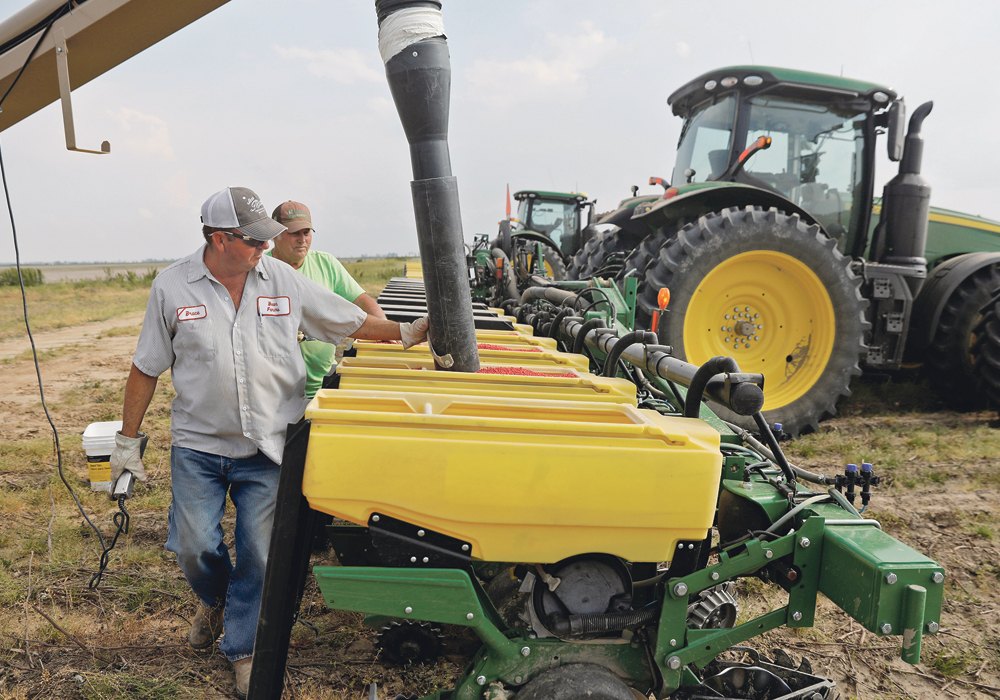The news on agricultural trade was miserable last week with the United States and China ending talks and instituting new tariffs but prices of major grains all bounced up a little from recent lows.
The reason was equally miserable news about planting delays in the U.S. due to wet, cold weather in the Midwest.
While planting on the Canadian Prairies is progressing at a normal pace, in the U.S. Midwest, corn and soybean seeding were less than half the usual pace as of May 12.
Read Also

Biofuel sector happy with federal budget
Advanced Biofuels Canada says new Biofuel Production Incentive is a lifeline until CFR amendments are in place.
The week of May 13-20 likely saw better progress and technically it is possible to plant huge amounts of ground in a short time. Reuters reporter Karen Braun looked through the statistics and found that in just one week, ending May 19 of 2013, an amazing 43 percent of the U.S. corn crop was seeded. That was about 41.8 million acres.
However, the ability to repeat such a performance and catch up this year looked dim as heavy accumulations of rain, 100 to 175 millimetres, were forecast for large parts of the Midwest for the week to May 23 and there was above normal possibility of rain in the region all the way to the end of the month and into June. This rain would fall on already saturated soils.
U.S. corn seeding is usually complete by the beginning of June. But in some bad years planting lingers into that month. For example, in 1995, 20 percent of corn was still to be seeded as of June 5. That year national corn yield was well below the trend line and farmers planted four million fewer acres than they expected in the March planting intentions report.
Late planting carries risk to yield potential because of factors such as a shorter growing season, greater insect and disease pressure, and higher risk of hot, dry conditions during pollination. That was the case in 1995 when corn was also stressed by an intense summer heat wave.
Indeed the negative affect of delayed planting can be made worse by growing season weather or it can be offset by ideal summer conditions.
For example, in 2013 only 28 percent of corn was planted by May 12 but things quickly turned for the better and the national average yield that year was 158 bushels per acre, pretty much right on the trend.
But the year before, 87 percent was planted by that point in the spring but average yield was way below trend at only 123 bu. per acre because of summer drought.
So each year has its own characteristics. Traditionally, this type of spring would have some American farmers considering switching acres from corn into shorter season soybeans.
But the weakest soybean prices in a decade and the strained relationship with China is ruling out that idea. Corn’s price is not good, but it still holds the potential for stronger returns.
Or more accurately, the potential for less pain.
It does not look like it will be a happy marketing year for farmers on either side of the border.
Trade problems and prospects for rising grain surpluses have big money managers betting that crop prices will fall further.
Through May 7 they held record net short positions in grain and oilseed futures.
If U.S. seeding does sink under torrential rain, a short-covering rally could be in the cards. But bad weather would have to continue to offset concerns about trade and stocks to keep the rally going.
The one consolation for our American neighbours is that U.S. President Donald Trump realizes his policies are hurting soybean and hog farmers. He personally does not have good ideas about how to help them — his tweets about buying American crops and dumping them on poor countries would be disastrous for markets and for the struggling farmers in the recipient countries — but his administration has taken the tried and tested path of simply giving farmers money.
The farm trade relief package last year has allocated about US$9.4 billion and the package for this year could be in the range of $15 to $20 billion.
Canada’s government is not interested in going beyond existing farm support programs to offset the hurt caused by another country’s trade war with China.















